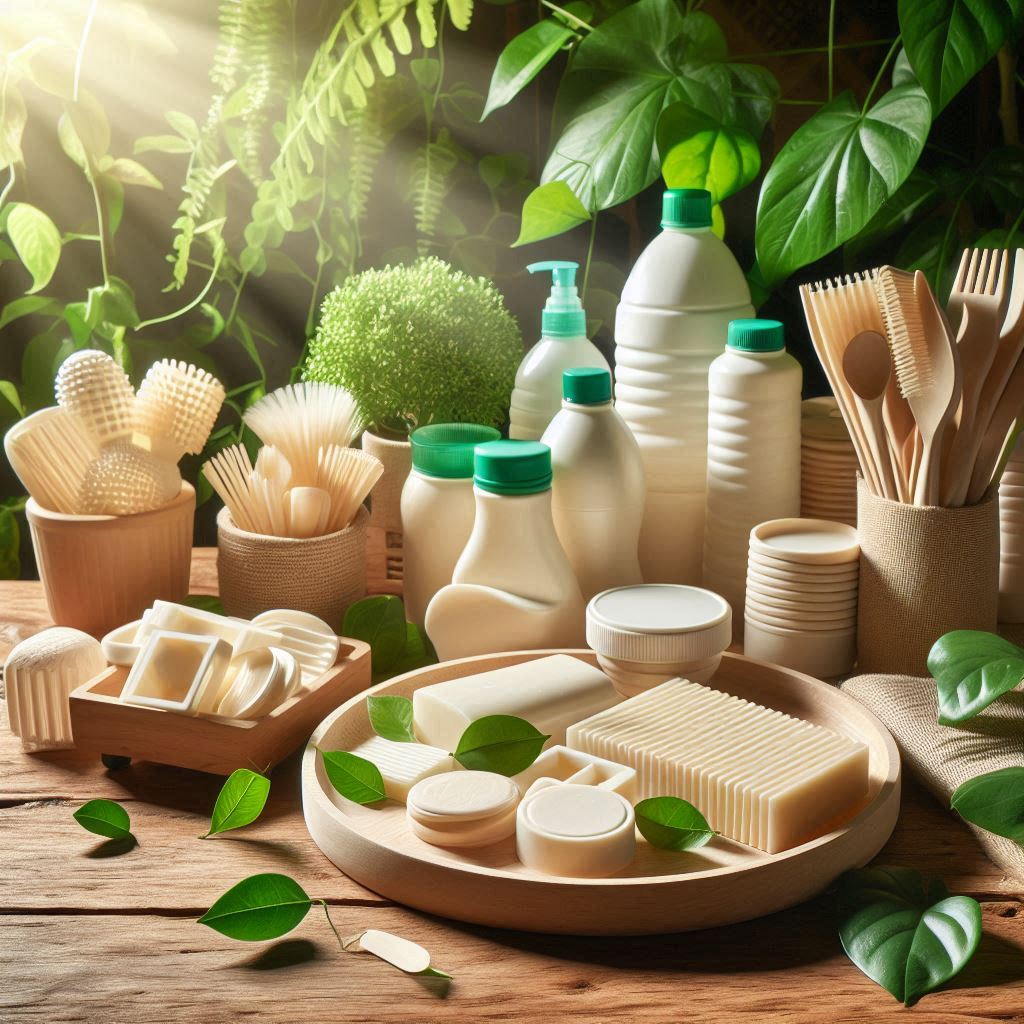
Introduction: Understanding Cassava Starch Bioplastics
As the world grapples with the environmental impact of traditional plastics, cassava starch bioplastics emerge as a promising alternative. Derived from the root of the cassava plant, these bioplastics offer a sustainable solution by utilizing renewable resources. Cassava starch is an abundant and cost-effective raw material that can be transformed into biodegradable plastics, which break down more easily than their petroleum-based counterparts.
The process involves extracting starch from cassava roots and converting it into a polymer that can be molded into various shapes and products. These bioplastics retain many desirable properties of conventional plastics, such as flexibility and durability, while significantly reducing environmental harm. By opting for eco-friendly materials like cassava starch bioplastics, industries can contribute to a circular economy where products are designed to minimize waste and pollution.
In addition to being biodegradable, cassava-based bioplastics are non-toxic and compostable, making them an ideal choice for packaging applications and single-use items. As research continues to advance in this field, cassava starch is poised to play a crucial role in shaping a more sustainable future for plastic production.
The Environmental Impact of Traditional Plastics
The environmental impact of traditional plastics is a growing concern that demands our immediate attention. Plastic pollution has become one of the most pressing environmental issues, as millions of tons of non-biodegradable waste accumulate in landfills and natural habitats each year. Traditional plastics, derived from fossil fuels, are notoriously difficult to break down and can persist in the environment for hundreds of years.
One of the most visible effects of plastic pollution is ocean pollution. Vast amounts of plastic waste end up in our oceans, forming massive garbage patches and posing severe threats to marine life. Sea creatures often mistake plastic debris for food, leading to ingestion that can cause injury or death. Additionally, as plastics degrade into microplastics, they enter the food chain, affecting not only marine species but also humans who consume seafood.
Environmental degradation caused by traditional plastics extends beyond oceanic ecosystems. Land-based wildlife also suffers from habitat disruption due to plastic littering and entanglement hazards. Furthermore, the production and incineration of plastic release harmful chemicals into the air and soil, contributing to broader ecological harm.
Addressing these challenges requires a concerted global effort to reduce reliance on traditional plastics through sustainable alternatives and improved waste management practices. By understanding the full extent of their environmental impact, we can take meaningful steps toward mitigating plastic pollution and protecting our planet for future generations.
The Science Behind Cassava Starch as a Bioplastic Material
Cassava starch is emerging as a promising bioplastic material, thanks to its unique properties and the growing demand for sustainable alternatives to traditional plastics. As a renewable resource, cassava starch offers an eco-friendly solution that can significantly reduce our reliance on fossil fuels. The science behind its effectiveness lies in its composition and ability to form biopolymers.
Cassava starch is composed primarily of amylose and amylopectin, two polysaccharides that are key to its functionality as a bioplastic. When processed under the right conditions, these components can be transformed into a flexible and durable material suitable for various applications. The process of biopolymer production involves gelatinizing the starch, which breaks down its crystalline structure, allowing it to be molded into different shapes.
Moreover, cassava plants are highly efficient in terms of yield per hectare compared to other crops used for bioplastics. This efficiency makes them an attractive option for large-scale production while maintaining sustainability. By utilizing cassava starch properties in this way, we can create sustainable materials that not only meet industrial needs but also contribute positively to environmental conservation efforts.
Production Process of Cassava Starch Bioplastics
The production process of cassava starch bioplastics is an innovative approach that leverages the natural properties of cassava to create sustainable alternatives to conventional plastics. This process begins with cassava cultivation, where the starchy roots of the plant are harvested. Cassava, known for its high starch content, is an ideal raw material for bioplastic manufacturing due to its abundance and renewability.
Once harvested, the cassava roots undergo a series of steps to extract the starch. The extraction involves washing, peeling, and grinding the roots into a fine pulp. This pulp is then processed to separate out the pure starch content through filtration and drying techniques.
The next phase in the bioplastic production methods involves converting this extracted starch into plastic-like materials. The starch is typically mixed with plasticizers—agents that increase flexibility—and other additives that enhance durability and performance characteristics. Through methods such as extrusion or injection molding, these mixtures are heated and shaped into various forms required for different applications.
Throughout this bioplastic manufacturing process, emphasis is placed on maintaining eco-friendly practices by minimizing energy consumption and using non-toxic materials. As a result, cassava starch bioplastics offer a promising solution in reducing reliance on petroleum-based plastics while contributing positively to environmental sustainability efforts.
The Advantages of Using Cassava-Based Bioplastics Over Conventional Plastics
As the world grapples with the environmental impact of conventional plastics, cassava-based bioplastics have emerged as a promising eco-friendly alternative. One of the primary sustainability benefits of cassava-based bioplastics is their biodegradability. Unlike conventional plastics, which can take hundreds of years to decompose, cassava-based bioplastics break down much more quickly, reducing long-term waste accumulation in landfills and oceans.
Another significant advantage is that these bioplastics are derived from renewable resources. Cassava, a widely cultivated root crop, offers a sustainable raw material source that does not rely on fossil fuels. This reduces the carbon footprint associated with plastic production and helps conserve non-renewable resources.
Furthermore, the use of cassava-based bioplastics supports local economies in regions where cassava is grown. By creating demand for this crop beyond its traditional uses, communities can benefit economically while contributing to global sustainability efforts.
In conclusion, as we seek eco-friendly alternatives to plastic, cassava-based bioplastics offer a viable solution with their biodegradable properties and renewable sourcing. These advantages make them an important part of addressing plastic pollution and moving towards a more sustainable future.
Pioneering Initiatives and Case Studies in the Use of Cassava Starch Bioplastics
Cassava starch bioplastics are gaining recognition as a sustainable alternative to traditional plastics, thanks to pioneering initiatives and successful case studies across various industries. Innovative applications of bioplastics derived from cassava starch have opened new avenues for reducing environmental impact while meeting industrial demands.
One notable case study involves the packaging industry, where companies have successfully implemented cassava starch-based films as an eco-friendly substitute for conventional plastic wraps. These bioplastic films not only offer comparable durability and flexibility but also decompose much faster, significantly lowering the carbon footprint associated with packaging waste.
In the agricultural sector, cassava starch bioplastics are being utilized to create biodegradable mulch films. These films help in soil moisture retention and weed control while eventually breaking down into organic matter that enriches the soil. This dual functionality highlights how innovative applications of bioplastics can enhance sustainability practices within agriculture.
Another successful implementation can be seen in disposable tableware production. Restaurants and catering services are increasingly adopting cassava starch-based plates and cutlery due to their biodegradability and minimal environmental impact compared to traditional plastic options. This shift not only aligns with global sustainability goals but also caters to consumer preferences for eco-friendly products.
These pioneering initiatives underscore the potential of cassava starch bioplastics in transforming industries towards more sustainable practices. As research continues and more case studies on cassava starch usage emerge, it is clear that these innovative solutions hold promise for widespread adoption across various sectors seeking environmentally conscious alternatives.
The Challenges and Future Prospects for Cassava Starch Bioplastics Industry
The cassava starch bioplastics industry is at the forefront of sustainable innovation, yet it faces significant challenges that must be addressed to realize its full potential. One of the primary hurdles in the bioplastic industry is overcoming market adoption barriers. These include higher production costs compared to conventional plastics and limited consumer awareness about the benefits of bioplastics. Additionally, there are technical challenges related to the durability and performance of cassava-based materials, which can impact their competitiveness in various applications.
Despite these obstacles, the future prospects for cassava starch bioplastics are promising. Advances in sustainable plastics technology are paving the way for improved processing techniques that enhance material properties and reduce costs. Research into blending cassava starch with other biodegradable polymers could lead to new formulations with superior characteristics suitable for broader industrial use. Furthermore, as environmental regulations become more stringent worldwide, there is a growing demand for eco-friendly alternatives, positioning cassava starch bioplastics as a viable solution.
To facilitate market adoption and overcome existing barriers, collaboration between researchers, manufacturers, and policymakers will be crucial. By fostering innovation and investing in education about sustainable materials’ benefits, the industry can drive greater acceptance among consumers and businesses alike. As these developments unfold, cassava starch bioplastics have the potential to play a significant role in shaping a more sustainable future for plastic production and consumption.






